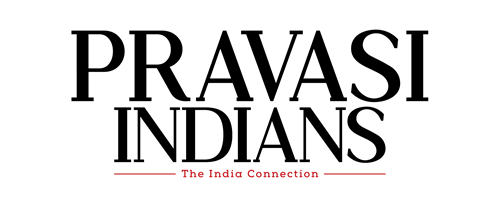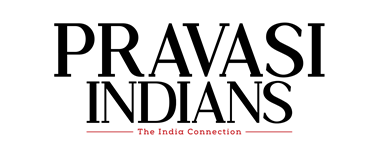A stomach ache in the middle of the Grand Canyon shouldn’t have been a crisis. Yet, as my niece writhed in pain, we faced an unexpected dilemma. The moment made me reflect on the nature of healthcare across borders. In a world where medicine is increasingly commercialized, have we lost sight of what truly heals?
We were driving through one of the Earth’s most magnificent landscapes — the Grand Canyon in Arizona, United States. It was a sight shaped by time, indifferent to human ambitions. Slow and silent, the Colorado River had carved its way through rock and history, creating seemingly chaotic formations that followed an order beyond human comprehension.
Just a day before, we were in Las Vegas—a city where nothing was left to time. Everything was built and rebuilt, designed to astonish and distract. Water, which was a quiet, eternal presence at the Grand Canyon, flowed here in extravagant displays. The contrast was striking — between a city (Las Vegas) that thrived on momentary pleasures and a landscape (Grand Canyon) that existed beyond the scope of human indulgence.
This was the final stretch of my nearly month-long journey across the United States. As a child, I had observed everything with curiosity, asking my father every now and then about every new place. Now, years of academic inquiry and personal experience made me question differently. Now, I compared cultures, governance, food, how people walked on the streets, and how they occupied public spaces. There was something systematic, almost choreographed, about life in America, where even unpredictability seemed to have been managed.
Then, suddenly, something broke the rhythm. My niece, who was travelling with me, fell ill. A severe pain in stomach and a mild fever. She was already on medication. Her mother, after reading about its side effects online, became anxious. The internet made every medicine seem like a calculated risk, each cure carrying a list of possible disasters. I remembered a doctor’s remark years ago:
“Everything you eat has a side effect — will you stop eating? Even the polluted air you breathe has side effects, so what?”
With growing anxiety and possible side-effects, we hurried back to the hotel, debating whether to take her to a doctor. But this was America. Here, a doctor was not someone you could simply visit. There were systems, costs, insurance, pre-approvals. Even in one of the world’s wealthiest nations, the sheer inaccessibility of medical care seemed absurd.
Stress and tension filled the room. My sister-in-law, a Ukrainian American, panicked. She instinctively reached for a small pouch of medicine she had carried from home — traditional remedies she trusted which had always worked for her daughter. I, too, had my small collection of herbal medicines, a habit carried over from my village in India. Two people from different parts of the world, shaped by generations of lived experience, had turned to their knowledge systems.
This moment was telling. Despite biomedicine’s dominance, people still held onto the wisdom of their cultures. Yet, in societies where profit-driven institutions increasingly control healthcare, such pluralism is either ignored or actively undermined. As regards insecurity of people’s health, it is not just about medicine — it is more about trust in the system itself.
Fortunately, I called my brother, a paediatrician who had chosen to remain in our village, a doctor not of corporations but of people. He suggested Pudin Hara, a simple herbal remedy that millions of ordinary Indians use for digestive disorders. Luckily, we had some with us. We administered it to her and it worked wonders.
Perhaps her American stomach was simply struggling to adjust to our spices and the food we had carried across continents as a small defiance against the dull and predictable flavours of sanitised global diets.
Healthcare: A privilege or a right?
This small episode made me reflect on something deeper. Healthcare has long been a source of anxiety for me—perhaps due to the medical crises I have witnessed firsthand or because I have so often been drawn into the struggles of others.
As a student at Delhi University, I had been the point of contact for distant relatives, acquaintances, and villagers who visited AIIMS for various ailments. My doctor friends would often joke that I should take a hostel room there. Over a period of time, I learned how to navigate the system, push for early admissions, and find doctors despite an overcrowded institution. These experiences shaped me well in ways I didn’t realise then. To this day, whenever I travel, the first thing I am particular about is the healthcare.
When I planned my trip to the United States, my preparations did not start with itineraries or sight-seeing lists. They began with research on insurance policies, on what would happen if I fell ill in a country where healthcare was a privilege and not a right. I applied for insurance and was surprised that the minimum insured amount for two people was five hundred thousand dollars, with a premium as low as Rs five thousand. It told me a story—one where a single hospital visit could cost hundreds of thousands of dollars in an emergency. But the insurance was cheap, revealing that most people would never use it. The real test of the healthcare system isn’t in day-to-day access but in moments of crisis—when the system traps you.
Now, India is gradually adopting this model.
Can Indians cope with American model?
I spoke with Indian Americans about this. They had money, stability, and access to the best hospitals yet healthcare was a constant source of anxiety for them. If the Americans despite their affluence found the system suffocating, what would happen to an average Indian once our healthcare was structured in the same way?
The Indian healthcare system has already changed dramatically. Once every village had a small hospital. In mine, the building still stands. It has been repainted and renovated at times but there are no doctors, no nurses. The villagers now rely on private clinics in the nearby towns. The government hospital, once functional, has collapsed in all but name — its structure remains, but doctors are absent.
In place of public healthcare, private clinics have mushroomed. Some are competent, others dangerous, but what unites them all is complete commercialisation of healthcare. A new breed of middlemen — brokers for doctors, fixers of admissions, and treatment facilitators — has emerged. The system is no longer built for healing but for profit.
Instead of reclaiming public healthcare, the Indian government has introduced Ayushman Bharat, which provides cardholders insurance coverage of up to Rs five hundred thousand. The ordinary people see this as a revolution. They believe it has made healthcare accessible. But in reality, it has shifted the burden from the state to the insurance sector. The patient is no longer a citizen entitled to care — he is a customer with a policy.
Modern healthcare: Changing facets
The modern state has its compulsions to protect markets, to encourage investment, and to support business. However, when it comes to healthcare, the state has another duty — one that it is slowly abandoning.
The trajectory is clear. First, healthcare was the state’s responsibility. Then, private doctors took over. Then came the corporate hospitals. Now, the real power lies with insurance companies. The patient no longer interacts with a doctor but with a system that decides whether he qualifies for treatment and whether his suffering is insurance-covered.
Healthcare has become a commodity. The human body has become a site of economic speculation. This is not sustainable. A different model must emerge – one that does not turn medicine into business, one that does not place human life at the mercy of insurance policies and profit margins. If not, the future is inevitable: the patient will become a consumer; and healthcare will no longer be about healing, rather about business.
Leaving the Canyon with a thought: Shouldn’t healing be a guarantee?
As we drove away, the Canyon — ancient, unmoved by time — began to disappear from view. It had endured, not because it was owned or controlled, but because it was simply left to take its own course. In contrast, the systems we construct, the institutions we claim to be essential, seem ever more fragile, eroded by the forces meant to sustain them.
I thought of my niece, of the panic, of the herbal capsules that had worked wonder without an accessible doctor. I thought of the people in my village, the abandoned hospital, and the world where healing — the most fundamental human need — is no longer guaranteed but bought and sold.
As we surrender even our ability to care for one another to the market, what remains of our humanity?
Blurb-1
The Indian government introduced Ayushman card which promises an insurance coverage of Rs 5 L, which in reality though has shifted the burden from the state to the insurance sector.
Blurb-2
Private clinics have mushroomed, making commercialisation of healthcare. A new breed of middlemen has emerged. The system is no longer built for healing but for profit.



